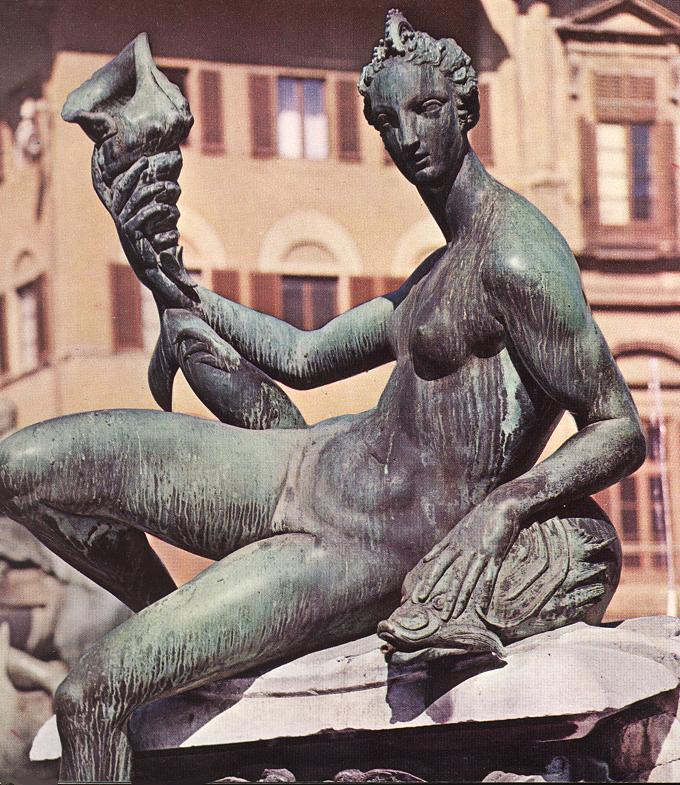
THE QUESTION OF STYLE
MANNERISM & BAROQUE
-
personal style (e.g. Rembrandt, Poussin, Rubens, Bernini, etc.)
period style (e.g. High Renaissance, Mannerism, Baroque)
pages 19-26
Mannerism and Baroque
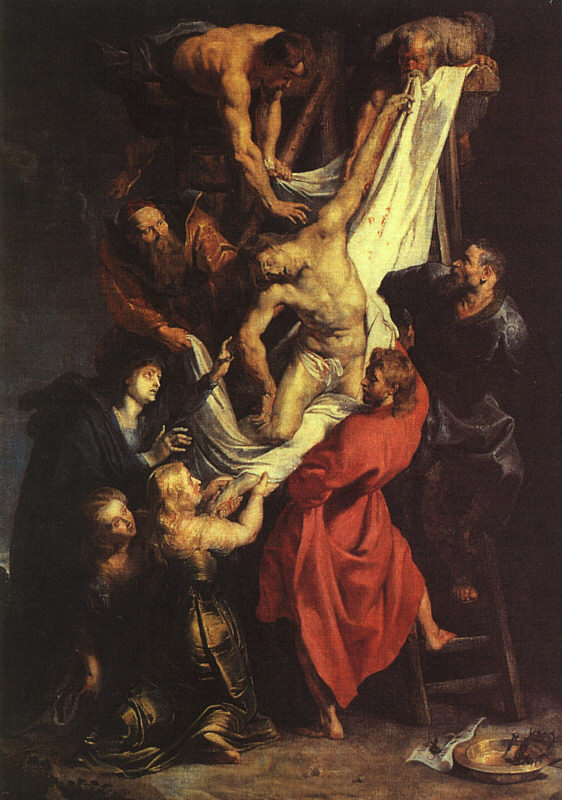
-
Rubens, Descent from the Cross, 1611-12
- grandeur of conception
- power of feeling
- both unite to produce an air of epic tragedy
- actions of figures are natural and appropriate
- grief and horror of those closest to Christ
- physical strain and effort of those lowering the dead body
- night scene [evening?]
- but the compact group around cross is illumined by a supernatural light
- contrasting colours
- livid, bloodless colour of Christ's body
- vivid red of St. John's mantle
Roger de Piles [Conversations sur la connaissance de la peinture, 1677, page 135]: "the painter has entered so fully into the expression of his subject that the sight of this work has the power to touch a hardened soul and to cause it to experience the sufferings endured by Jesus Christ in order to redeem it."
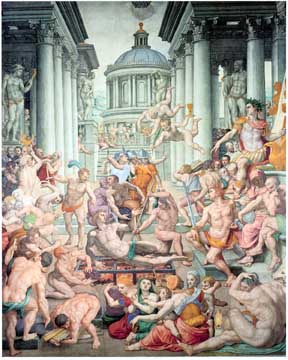
- elegant conception
- strangely inexpressive and detached
- agitated composition, full of incidents
- but, little sense of dramatic unity
- figures elongated and have energetic, angular postures
- arranged to create a decorative pattern
- no strong emotions
- shallow space
- forms tend to adhere to the vertical plane
- removes the event from the realm of flesh and blood
- Mannerist refinement and artifice prevail over nature and feeling
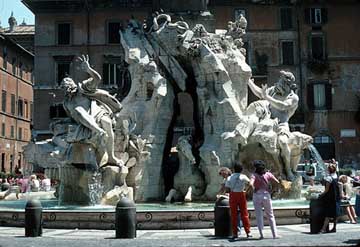
- robust naturalism
- free deployment of forms in space
- River Gods disposed in lively attitudes on an irregular, deep-cut rocky base
- craggy mass appears inadequate to support weighty obelisk on top
- complexity and multiplicity of parts
- but, possesses a powerful unity
- spectacular, exuberant monument
- also served as symbol of universal triumph of the church
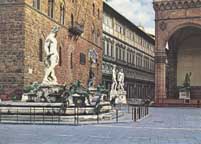
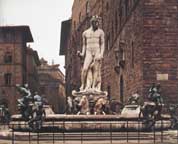
- gigantic marble Neptune standing on a high pedestal in centre
- bronze figures on smaller scale placed around perimeter
- lacks impressive visual unity of Bernini's fountain
- figure of Neptune flat and ungainly, to be seen primarily from front
- Neptune appears unrelated to bronze figures
- bronze figures "best parts of work"
- slender, graceful, elegantly posed, extravagant attitudes
- typical products of Mannerist fantasy
Defining Some Stylistic Terms (Blunt [1980])
Mannerism
-
elegant
refined
artificial
courtly style
origin in the art of Parmigianino, Madonna del Collo Lungo,
1533-40

Baroque
-
art created in Rome roughly in the period 1620-1680, then spread
elsewhere
'rhetorical'
aim was to strike astonishment and admiration in the spectator
in painting:

- dynamic composition
- irrational lighting and chiaroscuro
- dramatic gestures
- ecstatic poses
- miraculous effects
in sculpture:

- same kinds of poses and gestures
- sometimes combined with coloured marbles and trompe l'oeil imitations
in architecture:
-
Bernini, S. Andrea al Quirinale, 1658-70 (ext.)
- effects of movement by means of curving walls and incomplete spaces
- preference for ovals or polygons
- dramatic and concealed lighting
- effects of false perspective
- lavish introduction of coloured marbles and gilding
- skillful siting
Bernini, S. Andrea al Quirinale, 1658-70 (int.)
Classical
in architecture:
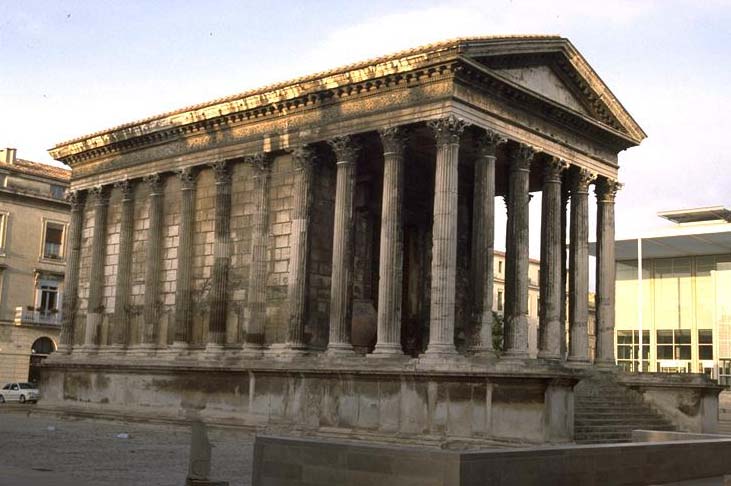
Bramante, Il Tempietto, Rome
- correct employment of the Orders according to ancient practice
- pursuit of certain qualities of clarity and simplicity
- preference for regular forms (circle and square)
- preference for plane surfaces
- clearly defined masses
- simple materials (stone and stucco rather than marbles and gilding)
- static and monumental result
in sculpture, compare:
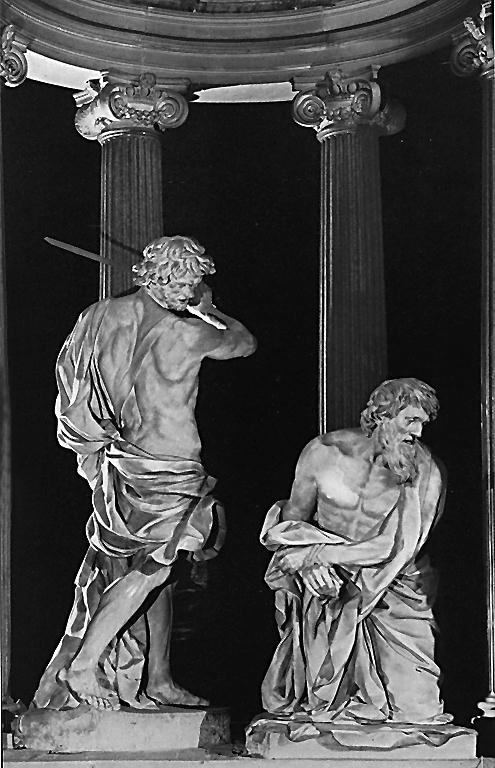
- direct imitation of Roman models
- either types of figures or forms of drapery
- preference for frontal views or low relief
- (rather than 3-D movement, high relief, and deep undercutting)

in painting, compare:
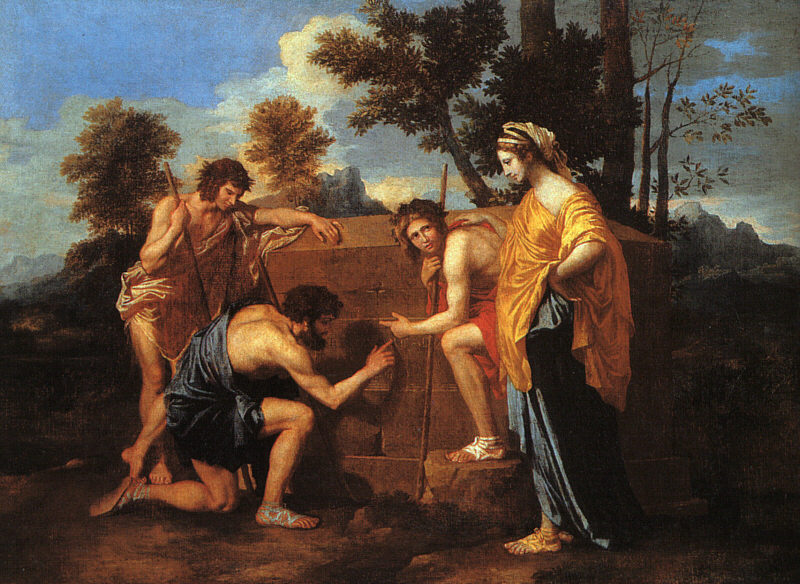
- figures based on ancient sculpture
- both in types and in treatment of drapery
- designs sometimes taken from ancient reliefs
- direct imitation of antiquity accompanied by symmetry in disposition of figures and clarity in the construction of space
- preference for static (rather than violent) poses
- explicit (rather than evocative) expressions and gestures
in contrast in painting, compare:

Rubens, Rape of the Daughters of Leucippus, 1618
- generally a use of clear daylight
- (rather than dramatic or supernatural lighting)
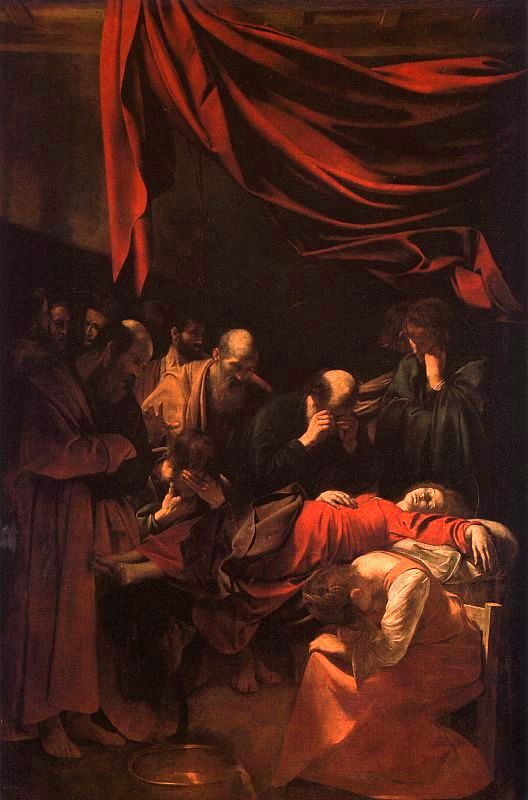
Caravaggio, Death of the Virgin, 1605-06
- emphasis on idea of decorum
- (i.e. making the style of the painting suitable to its theme)

